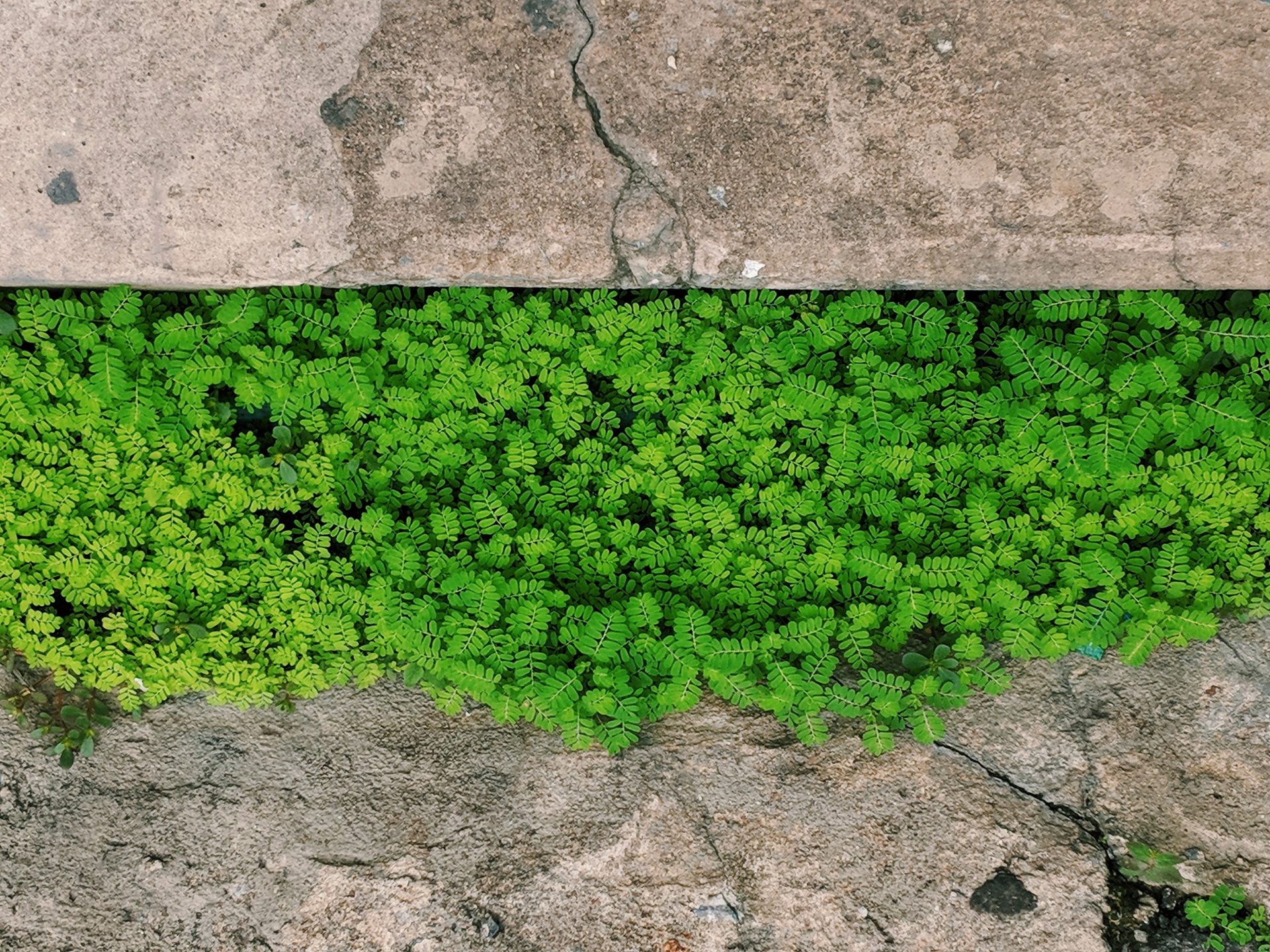If you are wondering how concrete and cement are impacting your life, let me ask you this: Did you recently move into a new flat or a house? In the past month, my partner and I were looking for a flat to move in together. We live in Berlin in Germany and when we started our search half a year ago, we were super excited to visit the flats and find one that fits us. But so were the other 50 couples who checked out every flat we visited. Searching for a flat in Berlin is like living hell. There are just not enough flats in the city for everyone who wants to live there centrally.

And although real estate firms are developing new projects as fast as they can, space remains limited, and they can’t keep up with the constant inflow of 40,000 new Berliners every year. But this is not a Berlin-only problem, but a global trend that has been going on for over two centuries and will continue in this century just as before. Berlin is only the tip of the iceberg when it comes to the need for new construction. That’s why today’s article covers the following topics:
- 🏙 Until 2050, three billion people more will move into cities
- 🏗 After water, concrete is the most used substance on Earth
- 🏭 Cement production causes more than 2.8 billion tonnes of CO2 each year
- 🚀 These startups reinvent cement to make it obsolete
🏙 Until 2050, three billion people more will move into cities
Currently, there are approximately eight billion people living on Earth. Within the next 30 years, there will be another two billion people joining us. Of course, these will need to have food and shelter, and many might be born in the poorest places of Earth as child death rates decrease. However, most will not be born poor, and 30 years of further economic development will lead to most of the poorest countries reaching what we would call global middle class today.
Most people won’t live in small huts in rural areas. Instead, even more people than today will move into the cities of today and tomorrow. Urbanisation continues and in 2050 more than seven billion people will live in urban areas according to Our World in Data – three billion more than today. Hundreds of brand-new cities have been built up from the ground in the past 20 years and there will be more in the future according to the Forbes magazine.
This rapid growth and the need for more new buildings in ever-denser cities creates strong demand for construction materials. This includes steel and wood, but primarily billion tonnes of concrete. For decades concrete has been the world’s favourite building material and it will continue to be for a simple reason: It’s great for constructing durable buildings, is locally available everywhere, and is cheap to build with.

🏗 After water, concrete is the most used substance on Earth
The Guardian states that “in the time it takes you to read this sentence, the global building industry will have poured more than 19,000 bathtubs of concrete.”
I had to read that sentence multiple times and every time it got worse. After water, concrete is by far the most used substance on Earth. And this should not be surprising as the walls around us are much heavier and colossal than everything else we possess combined.
But since we are talking about concrete, what is it exactly? In fact, it is not a homogenous material as it may seem sometimes when we look at a new concrete wall. Instead, it contains two main components:
- Aggregate, which mostly contains sand and gravel acting as filling material and taking the compressive stress in the material, and
- Cement, which acts as the glue in concrete by becoming hard in a chemical process called curing.
While the mining of sand and gravel causes environmental problems, too, in terms of global warming impact, the main problem is something else: Cement.
🏭 Cement production causes more than 2.8 billion tonnes of CO2 each year
Every year, we produce approximately three billion tonnes of conventional cement, also called Portland cement. In the production process, we further create 2.8 billion tonnes of CO2 each year. That is 5-7 % of all global greenhouse gas (GHG) emissions. Three to four times as much as all aircrafts together. It is important to get an understanding of the immense size of the climate impact of this single industry. This is why I wrote a whole article about understanding the size of the problem and the need for innovation to solve it.
The problem with Portland cement is that it is:
- very energy intensive to produce causing energy-related CO2 emissions, and
- the chemical process of making conventional cement releases CO2 which was formerly stored in the used raw materials.
Both parts used to create around 50 % of the total emissions each, but this ratio is changing as decarbonisation progresses in the cement industry.
Energy-related emissions in cement production are the minor problem
According to the Germany lobby organisation of cement producers (VDZ)
- 90 % of the energy input are thermal energy for heating
- 10 % are electricity, mostly for grinding
Although electricity makes up the minor share of energy consumption, it is often more expensive than the fuels needed for high-temperature heat. For example, in Germany electricity causes up to 50 % of the total cost of energy for the cement production. So, using electricity for the high temperature energy needed in the process is currently not only technically difficult, but also not an economically viable solution either.
Until a couple of years ago, energy-related emissions caused 0.4 tonnes of CO2 per tonne of cement. But energetic GHG emissions can be reduced easily. The power consumption can be decarbonised by procuring renewable electricity through green power purchase agreements (PPA) from renewable producers directly. Similarly, the fossil fuels used to generate the heat can be replaced with biomass, biomethane, or waste. Many German cement producers already do this to save CO2, as the rising carbon prices from the European emission trading system put increasing pressure on manufacturers. This already led to German manufacturers reducing the total emission from 0.95 tonnes to 0.6 tonnes of CO2 per tonne of cement.
However, as more sectors aim for decarbonisation, the demand for these substitute fuels will rise and prices will follow, as biomass and biofuels have limited potential. Land constraints and the competition with food, other renewables, and nature make it difficult to increase biomass utilisation. At the same time, the abundance of renewable energy will drive down electricity prices further, potentially opening opportunities for electrification in the long-term.
But the larger problem with cement comes from its chemical properties and not the energy we put into making it.
Chemistry-related emissions are the real problem
Conventional cement is created in a chemical reaction of limestone called calcination. And this reaction automatically releases a CO2 molecule for every limestone molecule that reacts.
For the nerds in us, the reaction follows this equation:
CaCO3 → CaO + CO2
Due to this, the production of one tonne of cement automatically creates 0.55 tonnes of CO2. And so far, there is no known industrial process that can create conventional Portland cement without releasing CO2.
Because the carbon dioxide is created during the production process in the factory and not on the construction site, some manufacturers propose to use CCUS. They want to leave the production process as it is and use carbon capture, utilisation, and storage (CCUS) technology to avoid their emissions. Some manufacturers already capture the CO2, but carbon capture and storage comes with its own problems. And in many countries, people don’t see it as a long-term solution to the problem.
But there is hope: Many cement companies and startups are working on replacing conventional cement with fully sustainable alternatives.

🚀 These startups reinvent cement to make it obsolete
The concrete and cement industry is a huge market. The whole global industry creates $1 trillion in revenue each year. And cement makes up round about $300 billion of that. However, the cement industry is so emission-intensive that they have the highest CO2 emission per dollar of revenue of all industries according to McKinsey.
Source: McKinsey
This means that the cement industry will be hit the hardest by rising carbon prices and the reduction of free emission allowances soon. Reducing carbon emissions in this market therefore represents a yearly value pool of appx. $240 billion at current EU carbon prices of appx. $85 per tonne of CO2.
A market as tempting as this one, makes new startups show up all over the world and their approaches cover the whole bandwidth of emission reduction options.
This strong variety of different approaches is especially favourable, because many of them can be combined:
- Reducing the share of cement in concrete by using filler materials,
- AND increasing the efficiency of the concrete and cement manufacturing through IoT and AI
- AND replacing Portland cement with carbon-free cement
- AND storing CO2 in the concrete permanently
Making carbon neutral Portland cement
The most obvious approach would be to replace conventional Portland cement with a carbon-free alternative by producing cement with a process that doesn’t release carbon emissions. However, that is easier said than done, because until recently there was no known process for producing cement without releasing CO2 in the process.

The startup Brimstone claims to have developed a process which produces chemically identical but carbon neutral Portland cement. Instead of limestone, they use calcium silicate rocks which have no embedded CO2 which could be released. According to their website, this process creates not only cement, but also magnesium species as a by-product. This by-product passively absorbs CO2, which allegedly makes the cement carbon-negative regardless of the fuel used in the process.
The two founders Coby Finke and Hugo Leandri set out to eliminate industrial GHG emissions by developing technologies which accelerate the transition. They are supported by several investors, including Breakthrough Energy Ventures and The Climate Pledge.
Making cement obsolete with biotechnology
Why care to replace cement if you can remove the need for it completely? That is what the next startup is trying to achieve.

BioZeroc is a Cambridge based biomaterials science company developing a zero-carbon concrete, entirely free from cement. Their patent-pending solution replaces the cement with bacteria that absorb carbon while forming limestone, working as a glue to bind aggregates together, forming BioConcrete. BioZeroc’s technology works at room temperature with renewable, circular, and waste materials for feedstock, with their unique solution focusing on faster curing times and scalability.
The two founders, CEO Liv Andersson and CTO John Somerville gathered a team of microbiology, biotech, and life science experts around them. In March 2022, they received £350k to accelerate the development of carbon-neutral concrete.
Storing carbon safely within the concrete
Another option for making concrete climate-friendly is by compensating the CO2 emission from the cement content. There are multiple startups following different approaches, but all have the goal of storing carbon dioxide or pure carbon within the concrete to create a carbon sink.

The Berlin-based startup ecoLocked is developing their own ecoLocked materials. These are concrete admixes which replace a certain percentage of the needed cement. Not only does this save the emissions from the cement production, but mostly it turns buildings into carbon sinks. EcoLocked materials integrate biocarbon, which is made from sequestered CO2 and then safely stored to ensure that the CO2 is not released again to the atmosphere.
Founded by Mario Vaupel, Stefanie Gerhart, and Micheil Gordon, the team set out to save 500 million tonnes of CO2 emissions every year – 1 % of global emissions! They are supported in their venture by public funding from the EU and the state of Berlin, but also leading European universities and the venture builders from 1.5° Ventures.
While ecoLocked puts sequestered CO2 in the form of biocarbon into concrete, the following two companies take captured CO2 directly.
Mineralising CO2 directly in the concrete
The Canadian Carbon X Prize winner CarbonCure uses a similar approach as Solidia. They introduce CO2 into concrete right before it is poured into form on the construction site. When the CO2 meets the cement, it directly mineralises and becomes part of the stone itself. This way, CarbonCure can reduce carbon dioxide emissions by 15 kg/m³ of concrete. This CO2 is permanently stored and won’t be released from the concrete even if the building is demolished in a couple of decades.
With this technology, CarbonCure has removed more than 170,000 tons of CO2 by today (08.06.2022) and is scaling up their operations strongly. Just in the past 12 month they have saved 75,000 tons of CO2 (0.0027 % of global cement-related emissions per year).
But their success is not only based on their technology, but also on a business innovation: Carbon Credits.
Due to the permanence, verifiability, and scalability of their solution, CarbonCure offers high-quality carbon removal credits for sale. Companies and individuals who want to offset their emissions can do so by paying CarbonCure for removing a specific amount of CO2 from the atmosphere. These carbon credits adhere to the highest standards set in the industry and ensure that CO2 emissions are truly and permanently offset. CarbonCure shares the additional revenue from these carbon credits with local concrete producers who use their technology to encourage increasing adoption of CarbonCure solutions.
The team around CEO Robert Niven and President Jennifer Wagner has been working on CarbonCure for over a decade. Investors include Sustainable Development Technology Canada, Innovacorp, Pangaea Ventures, Eagle Cliff Partners, BDC Capital, Amazon’s Climate Pledge Fund, and more.
The startup Solidia not only wants to reduce CO2 emissions, but they want to make it easy and profitable to use CO2 to create “superior, sustainable building materials”. Their approach is two-fold and combines a less-energy intensive cement manufacturing technology (30-40 % GHG emissions reduction) with a novel curing technology.
Instead of curing (hardening) the cement in the concrete with water, Solidia injects CO2 into the concrete. The CO2 reacts with the cement where it is permanently stored. Solidia claims that this could reduce carbon emissions from cement by a minimum of 1.5 billion tonnes of CO2 per year. And at the same time, the curing process takes only 24 hours instead of 28 days and could save up to three trillion litres of fresh water.
The team of over seventy scientists, engineers, and business leaders is strongly supported by Breakthrough Energy Ventures, Imperative Ventures, Zero Carbon Partners, BASF, OGCI Climate Investments, Kleiner Perkins, Total Carbon Neutrality Ventures, Air Liquide Capital, and many more investors.

The company MAA’VA developed a carbon sequestering eco-concrete that uses non-recyclable plastic waste as a replacement for sand, reducing sand use by 60 %. Their current product is furthermore cured with CO2, storing it in the concrete, and reducing water consumption by 75 %.
The team around founder and CEO Marieh Mehran won multiple prizes and is growing swiftly.
Reducing the amount of cement needed through AI-enabled production
The Berlin-based startup alcemy is using IoT sensors and controls in combination with AI-supported predictive manufacturing to enable a more efficient production process. Their system enables concrete and cement manufacturers to use predictive instead of reactive control. This leads to more uniform products and allows for reducing the amount of cement needed in concrete mixtures. According to their website, this enables a CO2 reduction of up to 50 % due to clinker reduced products.
Founded in 2018 by Leopold Spenner and Robert Meyer, the company grew to nearly 20 employees since then. Everyone at alcemy is driven by the wish to reduce carbon emissions drastically within their lifetime and their personal potential to help.
Reducing the amount of cement needed by mixing in fillers & cement alternatives
The finely granulated cement does not only act as the glue in concrete, but also needs to fill all the gaps between the materials of the aggregate. By mixing in other materials of various granularity, these gaps can be partially filled without cement, strongly decreasing the amount of cement needed per cubic metre of concrete.
Today, these fillers are primarily two materials which are by-products of other industries:
- Fly-ash from coal power plants,
- Metallurgic slag, especially iron slag from steel production.
Already today, 60 % of all fly ash from coal power plants is used in concrete, where it replaces cement and gives the concrete more favourable properties. Not only does it save CO2, but it is also a ridiculously cheap filler material, reducing costs and CO2 at the same time. However, as the world decided to phase out coal to achieve the climate targets of the Paris agreement, fly ash will become scarce in the future.
Alternatives must be produced which can replace fly ash and cement to minimise the need for Portland cement in the first place. One alternative is metallurgic slag.
The Irish company ecocem produces filler and cement substitutes from metallurgic slag. While slag is a by-product of the metallurgic process of making iron, steel, and other metals, it was mostly treated as waste and was disposed of in landfills. Ecocem has started to take this slag and create a cement alternative from it. With their product, up to 70 % of the cement can be replaced, reducing the overall emissions by a similar amount.
The company was founded in 2003 and has been a cement provider to the European market for two decades now. Their new push for sustainable cement is also supported by Breakthrough Energy Ventures and was lately highlighted in the series “Solve for Zero”.
However, as a by-product, metallurgic slag has only limited availability. In total there are approximately 600 million tonnes of iron and steel slag produced every year. A large share of this slag is already reprocessed and circulated back into the metal making process. However, using all of it for cement and filler alternatives would allow for reducing global cement consumption and related emissions by appx. 20 %.
That is great, but it does not get us to net-zero unless we pair it with many other solutions to replace the other 80 %.

The startup Terra CO2 follows a multi-step approach to replace Portland cement with their filler materials and cement alternatives, made from silicate-based igneous rocks. Their first pozzolan product can replace fly ash and cement to a total share of 10-30 %. Their next product shall increase this share to up to 40 %, going beyond what is possible with fly ash today.
But no matter with what alternative filler material cement is replaced, the remaining share still produces carbon emission. Therefore, Terra CO2 wants to replace Portland cement with their own geopolymer cement. They claim that in the beginning this cement will save 40-50 % of CO2 compared to Portland cement, but they want to improve that further – with rising demand.
The extremely ambitious team around founder Donald “D.J.” Lake consists of highly skilled researchers and engineers. They are supported by experienced advisors from the cement industry and supported by Breakthrough Energy ventures, too.
Let’s hope that these startups can scale up their production rapidly so that we can finally start building sustainably for everyone on this planet who will be looking for a flat.
See you next week. 😉 (Haven’t subscribed to The Climate Innovator newsletter yet? Join here!)
Title photo by note thanun on Unsplash





